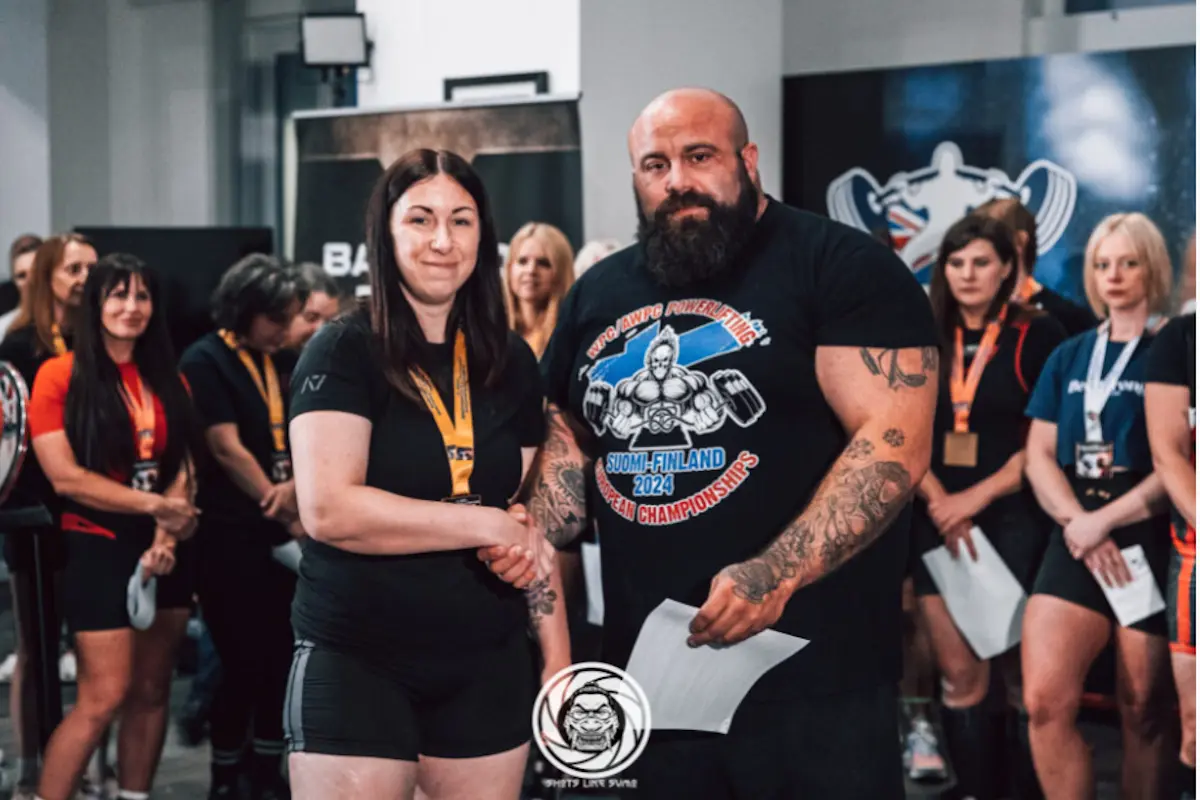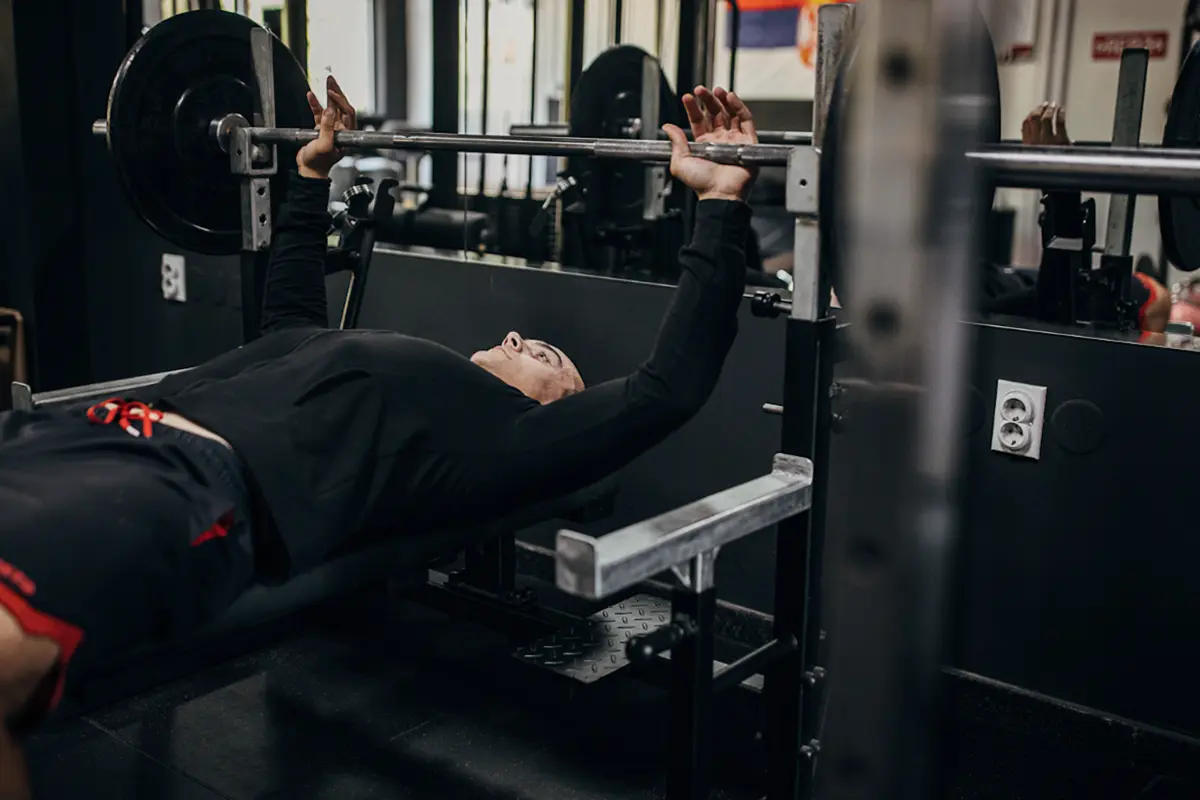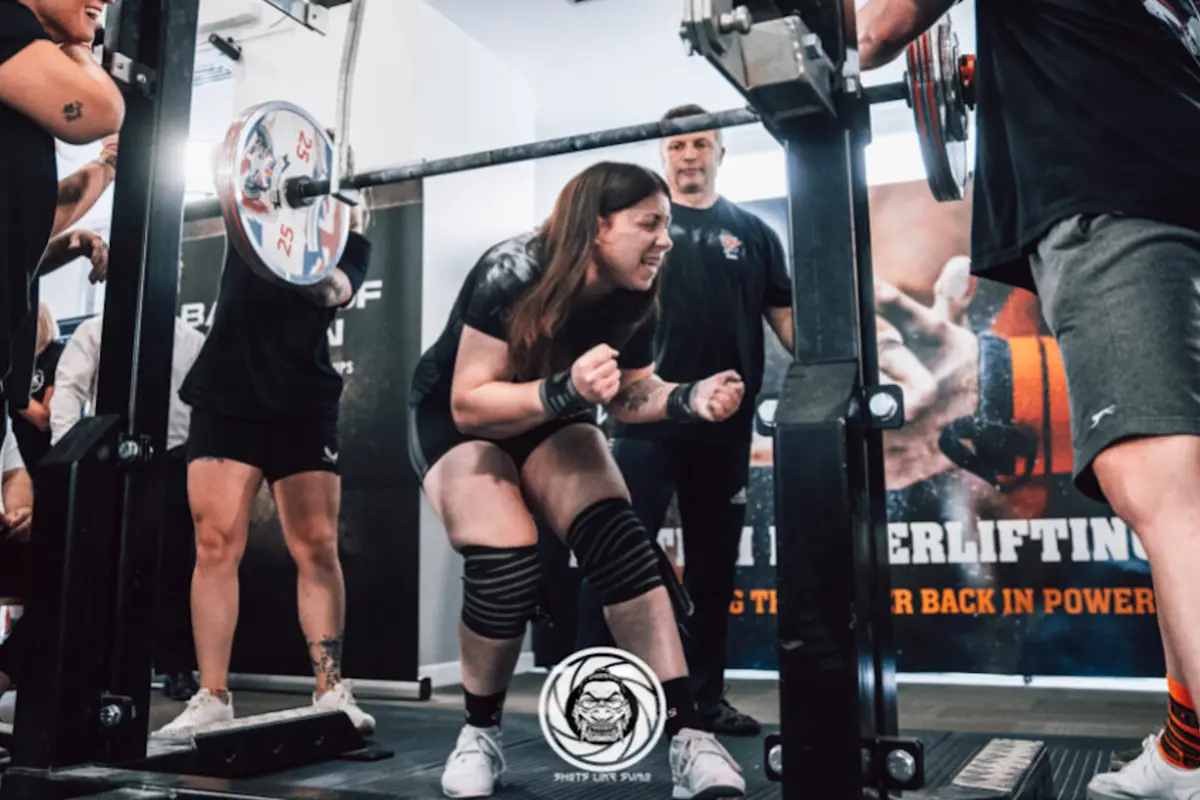Goal Setting in Powerlifting: How, Why and When

What's In This Article
- Key Highlights
- Introduction
- The Importance of Goal Setting in Powerlifting
- Types of Goals for Powerlifters
- Creating Effective Goals: The SMART Framework
- Goal
- Timeframe
- SMART Breakdown
- Intermediate:
- Goal
- Timeframe
- SMART Breakdown
- Advanced:
- Goal
- Timeframe
- SMART Breakdown
- Conclusion
- Frequently Asked Questions
- References
- Resources
Key Highlights
- Setting clear and specific powerlifting goals is crucial for long-term success.
- Utilizing the SMART framework helps create effective and achievable objectives.
- Differentiating between short-term and long-term goals is key for a good training program.
- Goals should be personalized based on your experience level: beginner, intermediate, or advanced.
- Regular review and adjustment of your goals are necessary to match your progress and needs.
Introduction
As a powerlifting coach, I know the significance of goal setting for lifters. It's how I help my athletes map out their training and realize their ambitions in the sport. I'll share below the goal-setting methods that work for my lifters, showing you when and how to set targets that match your powerlifting ambitions.
The Importance of Goal Setting in Powerlifting
Imagine starting a journey without knowing where to go. You might feel lost and without direction. Powerlifting is similar. Chad Wesley Smith, founder of juggernaut training Systems, stresses the significance of planning and clear goal setting. He believes that having a well-defined roadmap is crucial for reaching long-term objectives.
- Without clear goals, your training can feel slow and unfocused.
- Setting targets gives you the direction you need. It changes your training from just lifting weights into a clear plan for the future.
- These future aims help guide your training, nutrition, and recovery.
- They let you track your progress and show you when you succeed.
- They also keep you motivated, especially when things get tough.
Goals remind you of why you began powerlifting and keep pushing you to move forward.
The Role of Goals in Athletic Progress
At its heart, improving as an athlete is about improving over time. A key part of this is goal setting. (Williamson et al., 2022).
- Setting yourself targets beyond what you can presently do pushes you to work harder and train better.
- This cycle of setting targets, working towards them, and reaching them is significant for steady growth in sports.
- These targets also push your mental strength. When you visualize your goals and believe you can reach them, it can significantly increase your motivation. Reminding yourself of what you want to achieve helps keep you committed.
Having things to aim for reminds you why you spend hours training hard and sticking to diets. They link what you do now with what you want in the future.

How Goals Drive Motivation and Performance
Motivation can fade away if you don’t know what you’re aiming for. That’s why setting goals is so important.
- When you set specific aims, like achieving a new bench press record or adding 10 lbs to your squat, you have clear targets. These give you something tangible to work towards.
- Having a clear purpose boosts your motivation. It helps you push through challenging workouts and stay committed to your training plan. Seeing your hard work turn into real progress toward your target builds a cycle that keeps you motivated.
- Well-thought-out aims also act like a guide for your training. They help you break down a big task into smaller steps. This ensures that every workout, every rep, and every meal gets you closer to your main goal.
Bob Proctor, a renowned personal development coach, stressed the importance of taking inspired action towards goals. His teachings, when applied to powerlifting, emphasize strategic planning and training discipline as key components of goal achievement.
Types of Goals for Powerlifters
Powerlifters can use different types of goals to improve their training. They fall into two main categories: short-term and long-term. Short-term aims usually take a few weeks to a few months. They help build towards bigger, long-term targets that can take six months, a year, or even longer.
Short-Term vs. Long-Term Goals in Training
Short Term
- Short-term goals are important to keep you excited and focused on your training programs.
- These are specific and manageable targets. For example, a short-term aim might be to add 5kg to your deadlift in six weeks or to work on your squat by improving your depth.
- These small wins give you a sense of achievement and help you stay motivated in the longer term.
Long Term
- Long-term targets are about your main ambitions in powerlifting.
- This could mean reaching a particular weight class for a competition, hitting a specific total in your lifts, or qualifying for a national event.
- Long-term goals typically require six months to a year or more of hard work and commitment.
It’s essential to connect your short and long-term goals. Your short-term targets should support your long-term aims, making it easier to reach significant milestones. This will ensure you are always moving in the right direction and not just chasing quick wins that don’t help your overall progress in the sport (Baretta et al., 2019).
Dan John, a legendary strength coach and founder of Dan John University, emphasizes the importance of focus in goal setting. He coined the phrase "the goal is to keep the goal, the goal," highlighting the need to maintain focus on primary objectives and avoid conflicting goals that may hinder progress.

Specific Goals for Beginner, Intermediate, and Advanced Lifters
- For people just starting their powerlifting, aims should focus on:
- Creating a strong base
- Learning the correct form.
- You should aim for steady progress in weights, but remember that good technique is more important than lifting heavy.
- As you move from a beginner to an intermediate lifter, your goals may shift to:
- Increasing your one rep max in the squat, bench press, and deadlift.
- Improving a specific technique issue.
- Improving recovery strategies
- Advanced lifters often set targets for competitions. These can include:
- Placing top three in a local powerlifting meet
- Reaching a certain total weight for a national or international event.
- Claiming a national or international record in a lift.
Creating Effective Goals: The SMART Framework
Effective goals must be concrete, not just aspirational. The SMART framework (Specific, Measurable, Achievable, Relevant, Time-bound) helps create actionable powerlifting targets.
This means clearly defining what you want to accomplish, tracking your progress with metrics, and setting realistic deadlines. Following SMART principles ensures accountability and increases your chances of success (Lu et al., 2022).
Defining SMART Goals for Powerlifting Success
- Specific: Instead of saying something unclear like "get stronger," be precise. Say, "I want to increase my bench press by 10 lbs" or "I will improve my deadlift form by focusing on hip drive."
- Measurable: Set targets you can measure. Choose a weight increase, a number of repetitions, or a time frame for a workout to help track progress.
- Achievable: Aim high, but stay realistic. Consider your current skills, how often you train, and how well you recover. Goals should be challenging but not impossible. Keeping it real helps build confidence and keeps you moving forward.
- Relevant: Make sure the steps you aim to take match your main powerlifting goals. If you want to compete in a specific weight class, your training and nutrition should help you reach that aim.
- Time-Bound: Having deadlines helps you stay focused. Instead of saying, "I want to deadlift 400 lbs," say, "I want to deadlift 400 lbs in the next six months."

Examples of targets for different lifting levels
Beginner:
Goal |
Timeframe |
SMART Breakdown |
|---|---|---|
|
Increase bench press to body weight |
3 months |
Specific: Focus on bench press weight. Measurable: Use body weight as a target. Achievable: This is realistic for a beginner working hard. Relevant: It helps build basic strength. Time-bound: Complete in 3 months. |
|
Achieve a bodyweight squat with proper form |
2 months |
Specific: Focus on squat depth and form. Measurable: Reach bodyweight in a squat. Achievable: A strong goal for beginners. Relevant: It improves squat technique. Time-bound: Finish in 2 months. |
Intermediate:
Goal |
Timeframe |
SMART Breakdown |
|---|---|---|
|
Add 20 lbs to deadlift 1-rep max |
10 weeks |
Specific: increase deadlift max by 1 rep. Measurable: Add 20 lbs. Achievable: It's challenging, but you can do it with training. Relevant: It boosts a key powerlifting lift. Time-bound: Complete in 10 weeks. |
|
Include accessory exercises for weak muscles |
Ongoing |
Specific: Find and work on muscle weak spots. Measurable: Track how you improve in accessory exercises. Achievable: Make gradual changes as you go. Relevant: Helps prevent injuries and builds strength. Time-bound: This will be done throughout training. |
Advanced:
Goal |
Timeframe |
SMART Breakdown |
|---|---|---|
|
Qualify for a national powerlifting competition |
1 year |
Specific: Aim to qualify for a national event. Measurable: Meet the qualifying total. Achievable: This takes careful training and planning. Relevant: Supports your competitive goals. Time-bound: Prepare over 1 year. |
|
Improve competition performance by 5% |
Next competition |
Specific: Increase total points in competition. Measurable: Target 5% increase. Achievable: You need smart training to reach this. Relevant: It improves how you perform in contests. Time-bound: Should be ready for the next competition. |
Conclusion
Setting goals is recommended for success in powerlifting. Having clear and measurable goals helps you stay motivated and focused on making progress. Using the SMART framework – Specific, Measurable, Achievable, Relevant, and Time-bound – enables you to create goals matching your training level and check your growth.
Regularly looking at and changing your goals keeps them challenging but reachable. Setting specific goals in powerlifting improves your performance and gives you a plan for continuous improvement.
Frequently Asked Questions
What Are Realistic Powerlifting Goals for Beginners?
For beginners in powerlifting, it’s essential to set realistic goals. Start by building a good base for strength training. Aim to do a squat with your body weight. Try to bench press close to that same weight. Also, aim for a deadlift of at least 1.5 times your body weight. Always focus on using the correct form and technique.
How often should I review and adjust my Goals?
It's essential to check and update your powerlifting targets often. As you get stronger and gain more experience, your training programs and targets must also change. Look at your progress every few weeks, especially after reaching a significant point like a new deadlift personal record (PR). This helps make sure your goals stay challenging but still possible to achieve.
What are the benefits of setting specific goals in powerlifting?
Setting specific targets in powerlifting helps you stay on track and increases your motivation. It also gives you a straightforward way to see your progress. Instead of saying you want to "get stronger," try setting exact aims. For example, aim to add 10 lbs to your squat by a specific date. This will help you keep focused and measure your success better.
When is the best time to set new goals in a powerlifting training cycle?
The right time to set new goals in powerlifting is usually at the start of a new training block or after reaching a significant milestone. For instance, after you achieve a target back squat or finish a tough training cycle, take a moment to review. Then, set new targets and adjust your nutrition and training plan.
What strategies can be used to track progress towards powerlifting goals?
Tracking progress is key. Ways to help include keeping a training journal with sets, reps, and weights used. Monitor body weight and record lifts on video for form improvement.
References
- Baretta, D., Bondaronek, P., Direito, A., & Steca, P. (2019). Implementation of the goal-setting components in popular physical activity apps: Review and content analysis. Digital Health, 5, 1-13.
- Lu, Y., Yu, K., & Gan, X. (2022). Effects of a SMART Goal Setting and 12-Week Core Strength Training Intervention on Physical Fitness and Exercise Attitudes in Adolescents: A Randomized Controlled Trial. International Journal of Environmental Research and Public Health, 19(13), 7715.
- Williamson, O., Swann, C., Bennett, K. J. M., Bird, M. D., Goddard, S. G., & Schweickle, M. J. (2022). The performance and psychological effects of goal setting in sport: A systematic review and meta-analysis. Taylor & Francis Online, 1050-1078.